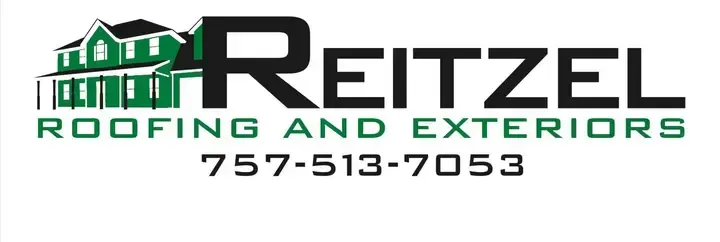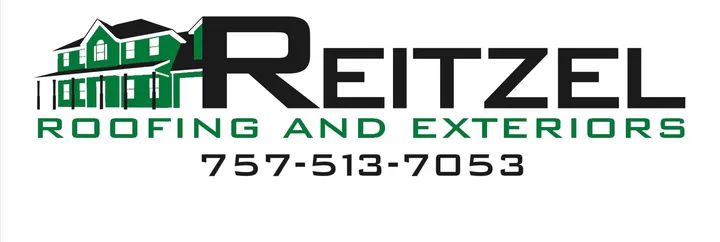LEARNING CENTER
CHECK OUT SOME OF OUR LATEST ARTICLES FROM IN OUR LEARNING CENTER

Shingle Roof Lifespan: Tips for Longevity | Reitzel Exteriors
As a homeowner, understanding the basics of shingles is essential for maintaining the integrity of your roof and protecting your investment. Shingles are a popular roofing material known for their affordability, durability, and aesthetic appeal. In this comprehensive guide, we'll cover everything you need to know about shingles, from their types and materials to installation, maintenance, and longevity. Your roof is your home's first line of defense, and keeping your shingles in top condition is crucial for maintaining a safe and secure living environment. However, navigating shingle care and replacement can be overwhelming.
Types of Shingles:
Asphalt Shingles: Asphalt shingles are the most common type of shingle roofing, known for their versatility, affordability, and ease of installation. They come in two varieties: three-tab shingles and architectural shingles, each offering unique benefits in terms of appearance and performance.
Metal Shingles: Metal shingles are becoming increasingly popular for their durability, longevity, and energy efficiency. Made from materials such as steel, aluminum, or copper, metal shingles offer excellent resistance to weathering, fire, and pests.
Wood Shingles/Shakes: Wood shingles and shakes provide a natural and rustic look to homes. While they offer aesthetic appeal, they require regular maintenance to prevent issues such as rot, mold, and insect infestations.
Tile Shingles: Tile shingles, typically made from clay or concrete, offer durability, longevity, and resistance to fire and pests. They are commonly found in Mediterranean and Spanish-style architecture.
Shingle Quality: Higher quality shingles, typically thicker and with better granule composition, can last significantly longer (up to twice as long) than budget-friendly options.
Installation Expertise: Proper installation by a qualified roofer ensures optimal performance and protects against leaks that can shorten the lifespan.
Climate and Weather: Harsh weather conditions like strong winds, hail, and excessive sun exposure take a toll on shingles. For example, intense sunshine can dry out the asphalt and make the shingles brittle.
Maintenance: Regular inspections and minor repairs can significantly extend the life of your shingle roof by addressing potential problems before they escalate. Left unattended, small issues can morph into major leaks and require more extensive repairs or even a full roof replacement.
Lifespan Estimates:
Here's a general guideline for shingle roof lifespan based on quality:
These are the most affordable option, typically lasting 15-20 years.
Offering a more dimensional look, architectural shingles can last 20-30 years.
These premium shingles, often featuring a slate or tile look, boast a lifespan of 30-50 years or even longer due to their thicker construction and higher-quality materials.
By taking proactive measures, you can significantly extend the lifespan of your shingle roof:
Schedule Regular Inspections: Have a qualified roofer inspect your roof at least every two years, or more frequently in harsh climates. This allows for early detection of potential problems.
Address Minor Issues Promptly: Don't wait for small leaks or missing shingles to become major problems. Fix them as soon as possible to prevent further damage.
Keep Your Roof Clean: Remove debris like leaves and branches that can trap moisture and accelerate shingle deterioration. Moisture buildup can lead to rot and the growth of mold or mildew.
Consider Roof Coatings: Applying a reflective roof coating can improve a shingle roof's heat resistance and lifespan, particularly in sunny climates. These coatings reflect sunlight, reducing heat absorption by the shingles and extending their lifespan.
Factors Affecting Lifespan (Not So Good News):
Here are some reasons why a shingle roof might not reach its expected lifespan:
Poor Installation: Improper installation by an inexperienced roofer can lead to leaks, ventilation issues, and other problems that shorten the roof's lifespan.
Neglecting Maintenance: Failing to address minor issues like missing shingles or clogged gutters can lead to bigger problems down the road.
Extreme Weather: Severe weather events like hailstorms, strong winds, or heavy snowfall can damage shingles and significantly shorten their lifespan.
Connected Damages when shingles is in bad condition:
When shingles are broken or damaged, it can lead to several potential issues with other roof elements:
Water Infiltration: Broken shingles create openings in the roof's protective barrier, allowing water to penetrate into the underlying layers. This can lead to water damage to the roof deck, insulation, and interior ceiling structures. Over time, water infiltration can cause rot, mold growth, and structural deterioration.
Underlayment Damage: Beneath the shingles, there is typically an underlayment layer, such as felt paper or synthetic material, which provides additional protection against moisture. If shingles are broken or missing, the underlayment becomes exposed to the elements, increasing the risk of damage from water, UV exposure, and debris.
Decking Damage: The roof decking, usually made of plywood or oriented strand board (OSB), serves as the structural foundation for the roof. If water infiltrates through broken shingles, it can saturate the decking, leading to rot, decay, and compromised structural integrity.
Attic Damage: Water that penetrates through broken shingles can seep into the attic space, damaging insulation, rafters, and other structural components. Moisture in the attic can also create an ideal environment for mold and mildew growth, posing health risks and further structural damage.
Flashing Compromise: Roof flashing, such as chimney flashing, vent pipe flashing, and valley flashing, is installed to prevent water from seeping into vulnerable areas of the roof. Broken or damaged shingles can compromise the effectiveness of flashing, increasing the risk of water infiltration around these critical areas.
Increased Risk of Leaks: Broken shingles create weak points in the roof's defense system, increasing the likelihood of leaks, especially during periods of heavy rainfall, snowmelt, or high winds. Even minor damage to shingles can escalate into more significant issues if left unaddressed.
Aesthetic Degradation: In addition to functional concerns, broken or missing shingles can detract from the appearance of the roof, diminishing the curb appeal and overall aesthetic of the home. This may impact the property's value and create a negative impression among potential buyers or visitors.
By entrusting your shingle roof to Reitzel Exteriors, you're not just investing in a roofing contractor—you're investing in peace of mind and the long-term protection of your home. With their expertise, dedication, and commitment to excellence, Reitzel Exteriors ensures that your shingle roof remains strong, secure, and reliable for years to come. Contact Reitzel Exteriors today to schedule an inspection and take the first step toward safeguarding the condition of your shingles. You can reach out through :
+1 757-513-7053

Our Services
Roof Repairs
Roof Leaks
Roof Storm Damage
Roof Replacement
Residential Roofing
Commercial Roofing
Siding
Trim
Windows
Fencing
Decks
Resources
Learning Center
Financing
Areas We Service
About Us
Contact Us
Privacy Policy
Copyright © 2022 Reitzel Roofing and Exteriors
All Rights Reserved
Our Services
Resources










